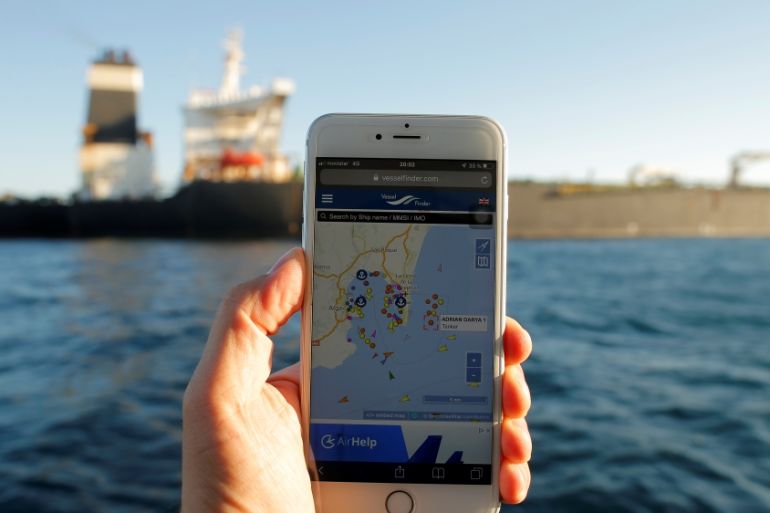Confusion over Iranian tanker’s destination after weeks of ordeal
After Lebanon dismisses receiving Adrian Darya, Turkey says it’s heading to Lebanese territorial waters and not a port.

Nearly two weeks since setting sail from Gibraltar, uncertainty remains over the destination of a huge Iranian tanker that has been at the centre of mounting tensions between the United States and Iran.
The Adrian Darya 1 vessel, formerly known as the Grace 1, was seized by the British territory on July 4 and held for six weeks on suspicion of shipping oil to Syria in breach of European Union sanctions. Tehran denied the charges and on August 15 a court in Gibraltar ordered the tanker’s release despite a last-minute legal attempt by Washington to have it detained.
Since its departure three days later, the Adrian Darya 1 has been bouncing around the Mediterranean Sea, with every change of course sparking speculation about where its cargo of 2.1 million barrels worth about $140m will ultimately go.
Maritime traffic monitors had shown that the Adrian Darya 1’s latest listed destinations, which are not necessarily the next approved port of call, were in Turkey. After tracking sites showed Mersin as its destination, it then switched on Friday to Iskenderun, a small Turkish port on the Mediterranean Sea – prompting a reaction from Turkey’s foreign minister.
“This tanker is not heading actually to Iskenderun [in Turkey], this tanker is heading to Lebanon,” Mevlut Cavusoglu said during a visit to Norway’s capital, Oslo.
|
|
He later clarified the vessel was headed towards Lebanon‘s territorial waters, not a Lebanese port.
Beirut had earlier dismissed the scenario, stressing that it never buys crude oil because it simply does not have refineries.
“The energy ministry does not buy crude oil from any country and Lebanon does not own a crude oil refinery,” Lebanese Energy Minister Nada Boustani said in a statement.
She added that Lebanon had not received any docking request from the tanker.
“There is also no request for the Adrian Darya 1 oil tanker to enter Lebanon,” Boustani said.
According to maritime traffic monitoring websites, the tanker is currently just west of Cyprus.
Iran said on Monday it had “sold the oil” on board the tanker and that the owner would decide the destination.
It did not identify the buyer nor say whether the oil had been sold before or after the tanker’s detention in the Strait of Gibraltar, on Spain’s southern tip. Tehran, which had provided formal written assurances to authorities in Gibraltar that the ship would not discharge its oil barrels in Syria, said it could not name the actual destination due to the US’s “economic terrorism” and its sanctions on Iran’s oil sales.
Tensions between arch-enemies Iran and the US have soared ever since Washington stepped up its campaign of “maximum pressure” against Tehran and reimposed sanctions after leaving last year a multinational nuclear deal signed between Iran and world powers in 2015.
Syria, which has ports on the Mediterranean, is also under various US and EU sanctions over its eight-year-old ongoing conflict.
In July, Iran impounded a British-flagged tanker in the Gulf, which Britain called a tit-for-tat move but Tehran denied any connection.